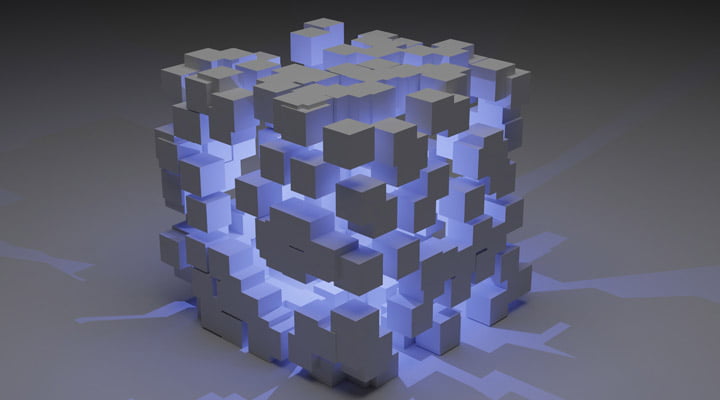Are you bored with millions of articles preaching the unbelievable benefits of Web 3.0? Do you think that the world is crazy to pay millions of dollars on non-fungible tokens (NFT) that have no real value? Are you confused that everyone talks about decentralization, but only a few are aware that WordPress is expected to reach half of the market share of CMS-powered websites anytime soon?
As a WordPress enthusiast, I share this frustration – WordPress dominates the market but there is not as much hype compared with any newly launched blockchain. WordPress has democratized the way we publish and consume content while a new blockchain, NFT, or crypto coin has done almost nothing.
This article won’t teach you new tips on how to use WordPress more effectively. Yet, it makes sense to read the entire article. It’s a huge endeavor to find a moderated way to anticipate the future of the Internet. People are more and more polarized these days and a moderated and informed opinion might be useful for everyone.
Web 3.0 Effervescence

Simplenet.io blog wasn’t and won’t be a place for political or societal debates. We are neither political analysts nor pandemic experts. However, it’s clear for everyone that the entire planet is polarized. People expect only black and white alternatives, while life is a large range of gray. Sadly, even in WordPress and technologies spaces, this kind of approach becomes popular. The debates are harsh and often counterproductive. Many people consider that Web 3.0 is a solution for all current problems of the Internet. Others don’t see the problems that need to be fixed! Is Web 3.0 a scam, a hype, or the future? Well…I strongly believe that it’s all these combined!
Web 3.0 is a scam because many individuals profited from the hype around the new Internet iteration. They crafted impressive whitepapers, generated buzz around these, and attracted investors. The Web 3.0 “experts” managed to steal money through various shady methods and cheated the investors. Yep, lots of fishy projects are in the world of Web 3.0.
Web 3.0 isn’t hype, but in the current state, there is too much talk and too little action in this area. Sadly, people associate Web 3.0 with day trading and get-rich schemas. As I emphasized, many scammers cheat people and make huge amounts of money. Altogether, this trend will fade away once people became aware of these scams.
Finally, Web 3.0 is the future! Yet, it’s a future that doesn’t kill the current web! Centralized organizations and big corporations will continue to exist for many years. Ethereum, Google, Bitcoin, and Microsoft may coexist in the same context.
Web 1.0 and Web 2.0
Before highlighting the distinctive features of Web 3.0, it’s good to have a short recap of the previous web iterations. These aren’t set in stone, so feel free to disagree with this classification. Its purpose is purely to highlight the Internet evolution.
Web 1.0 started in 1989 and ended in 2005 and experts call it the read-only Internet phase. It refers to the limited possibilities of creating online presences and the lack of interaction between users and the Internet. The Internet was a place to document and exchange information mostly via emails and basic messaging apps.
Web 2.0 started in 2005 and the signs are that it will coexist for many years with Web 3.0. It’s named the read-write Internet phase because user-generated content and social networks boomed in this period. The static websites turned into interactive platforms packaging lots of cool features. At the same time, a few technology companies reached fantastic market shares – they became tech giants that amassed a great deal of power.
Microsoft, Google, Apple, Meta (aka Facebook), and Amazon have the potential to change the Internet. Is it good or bad? Well, I use a Google product to write and edit this article. The same as most of you, I use Gmail, Google Maps, and YouTube daily. Is it moral to say that the big tech companies are bad for users? It’s a never-ending discussion, but it’s clear that too much power in the hands of too few people isn’t normal.
Expectations from Web 3.0
Web 3.0 evangelists created lists of features of the new Internet iteration. Their enthusiasm and work should be appreciated, but I emphasize that Web 3.0 still doesn’t exist. As long as Web 3.0 is more or less a chimera, having a clear set of features is childish. We should accept that Web 3.0 is in the early stages, and it’s too early to give it a clear definition. However, most users have the following expectations from Web 3.0.
Decentralization

If you aren’t paying, you are the product! Perhaps this saying is an exaggeration, but clearly, there are some nuances of truth. Big tech companies rule the Internet, affecting genuine competition, innovation, and privacy. Facebook has bought all the potential competitors to its products, Google collects personal data, and Amazon creates extremely accurate buyers’ profiles. All of this combined may make you feel less confident about what the future will look like.
Decentralization refers to the methods of building online entities that can’t be manipulated by a central institution or person. It’s clearly a movement against big tech companies, and many people don’t believe it stands a chance against them. Do you recall Encarta? It was a Microsoft product whose direct competitor was Wikipedia—an open-source project. Sometimes, the force of people is more important than the huge budget of a company.
Ubiquity
Making the Internet available for everyone, anytime, and anyhow is the dream of millions of people. To some extent, a part of the entire population benefits from high-speed Internet at affordable prices. However, a large portion of the population doesn’t have reliable and affordable access to the Internet. Signs point to Internet access becoming universal and free of charge in the next ten years.
Web 3.0 pushes the envelope and creates the perfect environment for a participative network. Thanks to its complex system under the hood, anyone can participate in any Web 3.0 application without revealing their identity. No censorship, no organization with full control over the web, and no limits.
Tokenized Economy

The Internet started with links, continued with likes, and we now prepare for tokens. It’s the essence of how Internet users appreciate the work of content creators. Yes, more or less, tokens mean real money! Would we pay for the content consumed? Would someone pay tokens to read articles like this? These are capital questions, and no one has a convincing answer at this very moment. However, we pay to consume Web 2.0 content by providing personal data. It’s a tradeoff we make many times unconsciously. You provide personal data and let YouTube track your activity. YouTube improves the ads system while you enjoy cool videos. It’s that simple—YouTube couldn’t have existed without you, and you couldn’t benefit from so much value without YouTube. Feel free to replace “YouTube” with any social network you prefer.
We 3.0 aims at providing not only information but also experiences. In this light, it looks like people will open their pockets faster. Metaverse and NFT technology promise to facilitate the existence of a web aimed at making experiences common to users.
Over to You
I hope you are more open and flexible in all aspects related to Web 3.0. It’s still a concept that needs attention, passion, and openness. It isn’t a threat to the current state of the Internet; Web 3.0 is to improve it. Hence, everyone should bring their contribution to this huge project. All opinions are welcomed, as long as they are pertinent, coherent, and clear. We should listen to them all because Web 3.0 is for everyone.
Leave a Reply